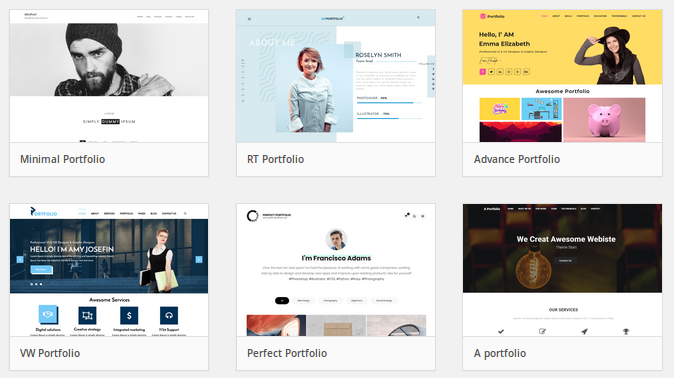How to Set Up WordPress for Your Portfolio Website

With the world’s freelance market growing rapidly, there must be tools out there that help professionals present their portfolios. WordPress just tops the charts as most freelancers, bloggers, and experts of all types choose it for its exceptional versatility and user-friendliness.
What Is a Portfolio?
A portfolio consists of a professional’s best pieces of work, which he or she wants to showcase for potential clients to read, view and/or test, thus evaluate his or her level. Every person who has skills needs to show what he or she can do. Running a personal website or blog is the most convenient way to do that. WordPress is a straightforward solution for both beginners and experienced users.
What Is WordPress?
WordPress is a versatile content management system tailored for easy blogging and page management. It features an abundance of ready-made themes and tools, with the help of which one can build and customize a portfolio website and advertise his or her accomplishments and expertise. It includes a whole set of features (themes, templates, plugins, etc.) and options enabling one to build a uniquely attractive WordPress portfolio site and run his or her little business successfully.
Setting up WordPress
Although WordPress is notoriously easy to use even for beginners, it always takes a bit of time and effort to understand how it works. This whole thing comes in several steps.
Step 1. Choose a Hosting Service
There are plenty such providers around the world. They come and go, so finding a good one can be difficult. However, there are some decent ranking services, which monitor the work of hosting services on the global scale and evaluate their quality by:
1. Technical support. This is important because every website owner is entitled to a quick solution to problems which are caused by factors not related to his or her activity;
2. Uptime/downtime. High downtime is an ultimate minus because, unless the problem is fixed ASAP, it begins to snowball;
3. Scalability. Every user must be sure that the hosting provider he or she is about to choose can handle large websites;
4. Reputation. Needless to say, one should look at what others say about the service prior to choosing it;
5. Security is a paramount matter, so every host service should provide up-to-date security options and techniques.
Step 2. Install WordPress and Check Themes and Plugins
Once you have registered with your hosting service, you’ll have access to a private cPanel, where you can select what you think is the most appropriate hosting plan. After you have made your decision, you will be guided through the installation process, which will include filling in the blanks, and choosing logins/passwords. Once WordPress is installed on your PC, your site is there, too.
There is no shortage of theme and plugins, and whatever you pick, this is how your portfolio site is going to look like. Use the ones that look and feel right and get a clear picture of your future project. The process is self-explanatory.
Step 3. Build Portfolio Pages
WordPress provides a header, home page, gallery, About me page, contact page, etc. as well as a good choice of templates. All you need to do is add relevant data and media content where required, information you think your potential customers should read and view. Flesh it out and try to look at your future site from an outside perspective.
Conclusion
WordPress gives you quite a handful of tools and techniques, which you can use to advertise your skills and capabilities, and help your future clients get a better idea of who you are and what you do.
About the Author:
Ron Gyst is a blogger, author and design enthusiast. In addition to writing about building businesses online, Ron is also a freelance graphic designer with 8 years of experience in this field.